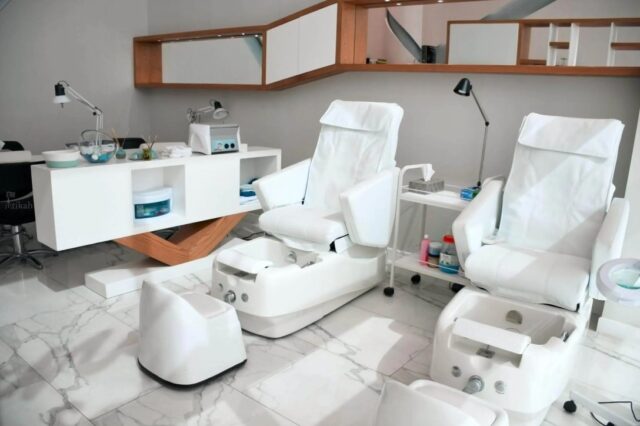
Starting your own private medical practice is an exciting venture for any medical professional aiming to take control of their career path. However, the financial investment required can be considerable.
The good news is, that with careful planning and strategic decision-making, you can establish a successful practice without breaking the bank. This guide will walk you through the essential steps to launch a budget-friendly private medical practice.
Find Your Niche
Medera Medical will help you get into the logistics, but consider what type of practice you want to establish. Identifying a specific area of medicine you’re passionate about can help define your target audience and differentiate your services from others.
A focused approach allows you to streamline your practice’s operations and potentially reduce startup costs by limiting the range of equipment and supplies you need.
Secure Affordable Financing

Securing the funds to start your practice is critical, and there are several routes you can take. Traditional bank loans are a common choice, but you might also explore options like small business loans, medical practice loans, or grants specifically designed for healthcare providers. Compare interest rates, repayment terms, and eligibility requirements to find the best fit for your financial situation.
Negotiating with lenders can also lead to more favorable terms. Don’t hesitate to present a solid business plan and demonstrate your potential for growth and profitability, which can persuade lenders to offer competitive financing solutions.
Choose the Right Location
The location of your practice plays a crucial role in its success but also impacts startup and operational costs significantly. Instead of opting for a high-cost area, consider less expensive neighborhoods that still provide access to your target market. Additionally, purchasing or leasing a property that requires minimal renovation can save a substantial amount of money.
Budget-Friendly Equipment and Supplies
Outfitting your practice with the necessary medical equipment can be one of the most expensive aspects of starting up. To save costs, consider buying certified pre-owned or refurbished medical equipment. Many suppliers offer these at a fraction of the cost of new equipment, and often with warranties.
Additionally, establish relationships with suppliers and negotiate bulk purchasing agreements or discounts for regular orders. This proactive approach can reduce ongoing expenses for consumables and smaller equipment.
Efficient Staffing Solutions

Hiring a full team right from the start might strain your budget. Initially, hire essential staff and consider roles that can multitask. For instance, a receptionist who is also trained in billing or a nurse who can manage both patient care and administrative tasks. As your practice grows, you can expand your team gradually.
Implementing efficient workflow practices from the beginning can reduce the need for a large staff. Use technology to automate appointment scheduling, patient reminders, and even some aspects of patient care management to keep your team small but effective.
Marketing on a Shoestring
Marketing is essential to attract patients to your new practice, but it doesn’t have to be expensive. Digital marketing offers cost-effective solutions to reach a broad audience. Focus on building a professional website, optimizing for search engines, and maintaining an active presence on social media platforms relevant to your audience.
Engaging with local communities through health talks or free consultation days can also build your reputation and attract new patients without significant expense. Partnering with other local businesses or healthcare providers can extend your reach and provide mutual benefits.
Maintain Compliance and Quality Care
Adhering to regulatory requirements is crucial for any medical practice. Stay informed about the legal and healthcare regulations that affect your practice to avoid costly fines or legal issues. Invest in a good healthcare attorney to guide you through the compliance landscape, which can save you from expensive mistakes down the line.
While maintaining a budget, never compromise the quality of patient care. Quality care builds trust and can lead to word-of-mouth referrals, which are invaluable for a growing practice. Regular training for yourself and your staff, staying updated with medical advancements breaking the bank.
This article will guide you through the essential steps of setting up a budget-friendly private medical practice, offering practical advice to help you minimize costs while maximizing efficiency and patient care quality.
Initial Costs

Before you can create an effective budget for your medical practice, you must gain a clear understanding of the startup costs involved. These costs typically include leasing or purchasing a facility, obtaining medical equipment and supplies, licensing and insurance fees, and hiring staff. Additionally, you’ll need to budget for ongoing expenses such as utilities, maintenance, marketing, and more.
One effective approach to managing these costs is to prioritize essential expenditures and find less expensive alternatives where possible. For instance, leasing equipment instead of buying it outright can significantly reduce your initial investment. Similarly, choosing a modest office space in a less expensive area can decrease your leasing costs.
Select the Right Location
The location of your medical practice plays a critical role in its success. It influences not only the patient influx but also the operational costs. To choose a location that supports a budget-conscious approach, consider areas with lower rent but still maintain adequate accessibility for your target patients. Accessibility is crucial to ensure that your patients can reach you easily.
Moreover, the demographic and competition in the area can also impact your practice. Opting for a location with a high demand for medical services but less competition can facilitate a quicker growth in patient numbers and, consequently, faster revenue generation.
Efficient Use of Technology
In today’s digital age, technology offers numerous opportunities to cut costs and increase efficiency. Investing in the right technology from the start can save you money in the long run. For example, electronic health records (EHR) systems streamline patient management, reduce paperwork, and minimize the risk of errors. While the upfront cost of an EHR system can be significant, the long-term savings in time and resources can be substantial.
Additionally, utilizing telemedicine platforms can reduce the need for physical office space and allow you to extend your services to a broader patient base without significant additional costs. Telemedicine not only expands your reach but also enhances patient satisfaction by offering convenience and flexibility.







